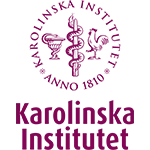Explore the credit course catalogue
78 Results

The "Clinical Research in Child and Adolescent Psychiatry: Methods and Practice" course aims to cover a range of methodological factors in clinical trials on youths with psychiatric disorders, including psychiatric assessment and psychological as well as pharmacological treatment. The course will provide broad as well as in-depth knowledge about methodological and practical aspects of clinical psychiatric research focusing on children and adolescents. The course also addresses good clinical practice principles and Swedish and international rules and regulations relevant to clinical research involving young individuals.

Dive into the cutting-edge world of nuclear medicine with this comprehensive course that blends theory and hands-on practice. In this one-week course, you will gain invaluable knowledge and skills at the forefront of medical imaging and targeted radiopharmaceutical therapies.
This course offers a unique opportunity to:
- Master the fundamentals of radiation physics and biology
- Explore state-of-the-art diagnostic and therapeutic applications in oncology and neurology
- Gain practical experience handling radiopharmaceuticals in a laboratory setting
- Understand the latest developments in personalised medicine using radioactive tracers
Upon completing the course, you will be allowed to handle radiopharmaceuticals and open radioactive sources at Karolinska Institute and Karolinska University Hospital.

The course is designed to provide students and researchers with a solid understanding of functional Near-Infrared Spectroscopy (fNIRS) as a relatively new tool to measure brain activity and will emphasize both theoretical knowledge and practical skills of fNIRS. The students will gain expertise in the underlying principles of fNIRS, its instrumentation, and various analytical approaches. The primary goal is to empower students with the knowledge of this additional neuroimaging tool to design and execute advanced experiments, interpret fNIRS data effectively, and contribute to cutting-edge research in neuroscience and related fields.

The main purpose of the course is to provide the students with a solid understanding of the tools available to analyze brain structural data measured with structural magnetic resonance imaging (sMRI). The students will develop the ability to critically review results provided by different methods, to select the most adequate tools and experimental designs to answer different questions and to compare their relative advantages.

The course will introduce neuropsychological assessment in an aging population, focusing on age-related cognitive changes and their neural correlates. An additional purpose is to increase understanding of cognitive aging and how to differentiate between non-pathological cognitive aging and early signs of pathology. After the course, you will be able to define and describe common neuropsychological concepts and measurement techniques and demonstrate an overall understanding of neuropsychological investigation methodology and cognitive diagnostics in aging. The course will give you an increased understanding of cognitive aging and the complexity of differentiating between “normal” and early-stage pathological aging.

This course will provide curious students with an overview of the field of nervous system injury and possibilities for repair. We will focus on the cellular pathobiology but have a translational outlook and integrate the clinical perspective. The student will after the course know the basic concepts and recognise relevant research questions in the field. Hence, the student have aquired up to date information and understanding of the problems and possibilities for repairing an injured central or peripheral nervous system.

The course is aimed for you who want to get an understanding of the principles of PET, the methodology used for neuroreceptor imaging and quantification, as well as to get an insight in important research ongoing in the field and in the clinical applications of PET.

This course has the main general purpose of connecting two topics, or disease types, which are generally known by the scientific community to be completely distant from each other, such as Infections of the Central Nervous System (Neuro-Infections) and neurodegenerative diseases/dementia.
Students should gain knowledge on the common neuroinflammatory processes and molecular mechanisms of neuronal damage that are common between neurodegenerative diseases and Central Nervous System infections. These learning outcomes reflect the purpose of the course, which is of shedding light into the interplay between dementia/neurodegenerative disease and infections and try to understand the molecular biology that connects these two types of brain disease.

This course provides a solid ground in neuroscience, including cellular neuroscience, sensory and motor functions, and higher brain functions. It is intended for those lacking a basic neuroscience education. It runs in parallel with the Neuroscince course of the Bachelors programme in biomedicine. The course does not give regular course credits for doctoral students, but can be used to cover the demand of a grounding course in human physiology/pathology.

The purpose of the course is to give doctoral students a broad knowledge of Alzheimer's disease, covering cellular
mechanisms as well as clinical features and diagnosis. Experts in the field are invited to give the lectures securing
communication of up-to-date knowledge about the disease. Students will also get the opportunity to obtain deeper
knowledge on specific sub-topics during the planned group assignments. The second part will provide pratical
knowledge about brain development, brain anatomy and connectivty and AD and dementia neuropathologies.

This course takes you on a journey into the exploration of how the brain shapes and enables our social and affective behaviors. We will examine key questions, such as how we learn from each other, when and in what ways social norms influence us, and how our communication and social decision-making unfold.

The course covers the theoretical background to the brain imaging methods sMRI, fMRI, PET, EEG and MEG, such as what aspects of the human brain's structure and function they register, and the operation principles of the imaging instruments. The coursed gives the student a good understanding in how the different methods are used within in academic research as well as within health care. The course also addresses how the imaging methods can be combined in multimodal analyses, and discusses the interplay between development of theory, instrumentation, method, and applications.
The course begins with an introduction to brain imaging methods within neuroscience. In separate course modules, the course then offers the student a deeper understanding of the different methods sMRI, fMRI, PET, EEG and MEG, as well as combining them in multimodal brain imaging. Finally, the students will deepen their knowledge on a topic of their choice in an individual study project.

The purpose of the course is to introduce the topic of artificial intelligence (AI) in mental healthcare focused on theoretical development, ethics and practical application informed by a scientific approach.

This course will elevate your AI proficiency, preparing you to actively engage in the digital evolution of healthcare. It offers a comprehensive perspective on the healthcare shift, steered by medical necessities, and bolstered by innovative artificial intelligence solutions.

Topics covered include:
- Basics of monolayer glioblastoma cell culturing
- Generation and culturing of human glioblastoma organoids
- Immunochemistry, Western Blot, DNA/RNA isolation
- Flow cytometry analysis of cell death and cell viability assays
- Live-cell imaging and morphology analysis
- Data analysis including statistics using ImageJ, FlowJo, GraphPad PRISM
- Visualization of results using Microsoft Excel/Powerpoint or Adobe illustrator

Topics covered include:
- Hearing and speech perception and associated disorders (e.g., hearing loss, deafness, tinnitus)
- Vestibular function and associated disorders
- Objective electrophysiological measures: auditory and/or vestibular evoked responses (ECochG, BERA, ASSR, CERA, VEMP)
- Behavioural experiments (psychoacoustics)
- Principles of hearing rehabilitation with neural prostheses, i.e., cochlear implants
- Research methods in audiology/auditory neuroscience
- Application of methodology (in patients, if possible)
- How to design and conduct research projects

Topics covered include:
- Experimental design strategies
- Fluorescent immuno-histochemistry
- Confocal Microscopy
- Intra-vital Microscopy (e.g. two-photon, three-photon, 2P-STED, ...)
- Data analysis
- Behaviour

Topics coverd include:
- Vascular Biology and organotypic properties
- How to investigate blood vessels in the CNS
- Isolation of blood vessels and endothelial cells from the mouse CNS
- Endothelial cell tube formation assay
- Co-culture of endothelial cells and pericytes in 3D
- In vitro blood brain barrier assay

Topics covered include:
- Tissue isolation and cryosectioning
- Immunofluorescent staining/Western blots
- Tissue isolation and cryosectioning
- Imaging (e.g. Confocal microscopy, Slide scanner etc.)
- (Semi-) automated image anaylsis (e.g. Fiji, machine learning based analysis)

Topics covered include:
- Coding: basic concepts, practical training, testing
- Foundations of sensor technologies
- Foundations of Bluetooth communication
- Usage of advanced programming interfaces (APIs)
- Analysis of time series data
- Introduction to machine learning techniques

Topics covered include:
- CRISPR/Cas9 mediated genome editing in mammalian cell lines
- CRISPRoff genome editing tools to modify activity of gene promoters
- Cloning of promoter regions and relevant proteins into reporter gene and mammalian expression vectors
- Reporter gene assays to measure activity of gene promoters or unknown DNA sequences using plate luminometer
- Chemical modification of genomic DNA for DNA methylation analysis
- Pyrosequencing for detection and quantification of DNA methylation
- Chromatin preparation and chromatin immunoprecipitation analysis
- Standard PCR and quantitative reverse transcription PCR analysis
- Transfection and expression of relevant proteins in mammalian cells
- Western blotting for protein analysis

Topics covered include:
- rAAV-guided engram labeling techniques (Cal-Light, SomCal-Light, FLARE)
- Tissue engineering (FluoClearBABB, ExM)
- Large-field superresolution microscopy
- AI-guided behavioral classification
- Multifactorial behavioral classification

Topics covered include:
- Deep brain imaging using single- and two-photon imaging techniques
- Miniature microscope recordings in freely moving animals
- Combined all-optical imaging and optogenetic tools
- Large scale neural population analysis using data science and machine learning techniques
- Behavioural phenotyping using markerless pose estimation
- Scientific programming using Python

Topics covered include:
- Histological preparation of rodent sensory organs
- Immunohistochemistry on mole-rat and mouse neuronal tissues
- 3D histology using tissue clearing
- Fluorescence microscopy, Light sheet microscopy
- Behavioural assessment of magnetic orientation under controlled conditions

Topics covered include:
- Cellular resolution fluorescent in vivo imaging (mouse model)
- Histological analysis of post-encephalitic brain tissue changes
- Field electrophysiology (in vivo, in vitro)
- Patch-clamp cellular recordings (in vitro)
- Targeted light-based circuit interference, light-activated antiepileptic drugs

This module is dedicated to understanding and investigating how small molecular modulators can be used to specifically target prominent metabolic pathways using the mouse as an experimental animal model. Attendees will be introduced to murine animal handling, murine primary adipocyte isolation and in vivo, ex vivo and in vitro pharmacological experimentation with the model system. The practical work will be supported by institute seminars covering, among other, signal transduction metabolism and pharmacology.

Topics covered include:
- Assessment of memory and imagination in patients with neurodegenerative dementias and related to aphantasia
- Rating of patients’ memory reports
- Analysis of patient data
- Writing summary reports

The lab-based practical part of the course will cover methods used to tackle questions in the research area outlined above, such as cell culture, microscopy, tissue dissociation and processing of tissue samples, MACS and FACS-based cell analysis and separation, cell transfection, cell genome engineering, transgene expression, cellular
assays, protein and gene expression analyses etc. In addition to the practical part, students will attend lectures and seminars.

Topics covered include:
- animal models to study epileptogenesis
- *omics analyses of human epileptic specimen
- Screening analyses for classical auto-antibodies and new candidates inpatients suspicious for limbic encephalitis
- Analyzing the functional role of patient-derived auto-antibodies in epilepsy in vitro und in vivo
- Analyzing synchronous network activity in vitro (multi electrode array; MEA)
- CrispR-Cas systems to interfere with epileptogenesis
- Generation of animal models to study limbic encephalitis
- Neuropathology in experimental LE

Topics covered include:
- Basic protein-biochemical methods (protein-protein interactions, Western Blotting
- Processing of human samples for protein detection
- Basic cloning techniques and CRISPR
- Cell culture work with primary cells and cell lines


